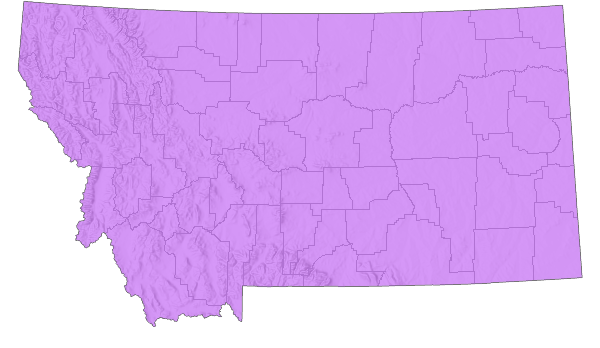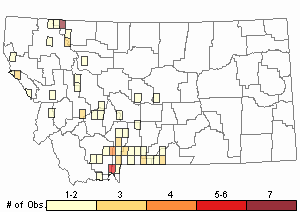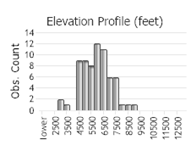View in other NatureServe Network Field Guides
NatureServe
Montana
Utah
Wyoming
Idaho
Wisconsin
British Columbia
South Carolina
Yukon
California
New York
Police Car Moth - Gnophaela vermiculata
General Description
The adult Police Car Moth (Gnophaela vermiculata) is all black except for large white spots on wings. The wings have white patches outlined by black veins on a black background. The wingspan is about 54 mm. Although there are a number of similar-looking species in the genus, this is the only species that occurs in Montana. The large size, black and white pattern in combination with the elongate wings and diurnal activity are unique to this species in Montana. The larvae are yellow with uniformly-distributed patches of black hairs that partly obscure the yellow ground color (Coin 2004).
Diagnostic Characteristics
Langton's Forester (
Alypia langtoni) is smaller with black wings with white patches, and the larvae feed on foliage of
Epilobium (fireweed) (USGS no date).
Species Range
Montana Range
Range Descriptions

 Native
Native
Range Comments
The Police Car Moth is common and widely distributed at mid elevations among the mountain ranges of western North America. It ranges from western Manitoba then west to British Columbia, and south to Utah and Colorado (Coin 2004).
Observations in Montana Natural Heritage Program Database
Number of Observations: 106
(Click on the following maps and charts to see full sized version)
Map Help and Descriptions
Relative Density

Recency



 (Observations spanning multiple months or years are excluded from time charts)
(Observations spanning multiple months or years are excluded from time charts)
Habitat
The Police Car Moth occurs in open, wooded areas of the foothills and boreal forest (Schmidt and Robinson no date).
Food Habits
The larvae feed on the foliage and flowers of
Mertensia (bluebells). Adults nectar sources such as
Cirsium (thistle) and
Solidago species (goldenrod) (Coin 2004).
Stewardship Responsibility
References
- Additional ReferencesLegend:
 View Online Publication
View Online Publication
Do you know of a citation we're missing? Fultz, J.E. 2005. Effects of shelterwood management on flower-visiting insects and their floral resources. M.Sc. Thesis. Bozeman, MT: Montana State University. 163 p.
Fultz, J.E. 2005. Effects of shelterwood management on flower-visiting insects and their floral resources. M.Sc. Thesis. Bozeman, MT: Montana State University. 163 p.
- Web Search Engines for Articles on "Police Car Moth"
- Additional Sources of Information Related to "Insects"





